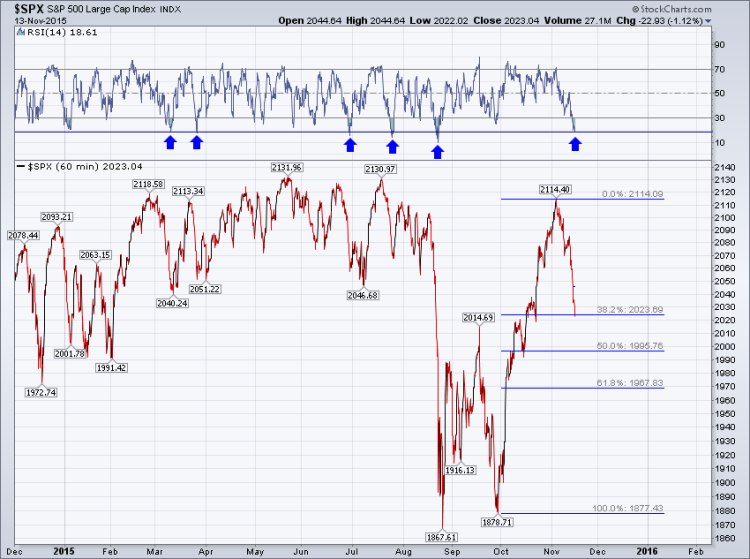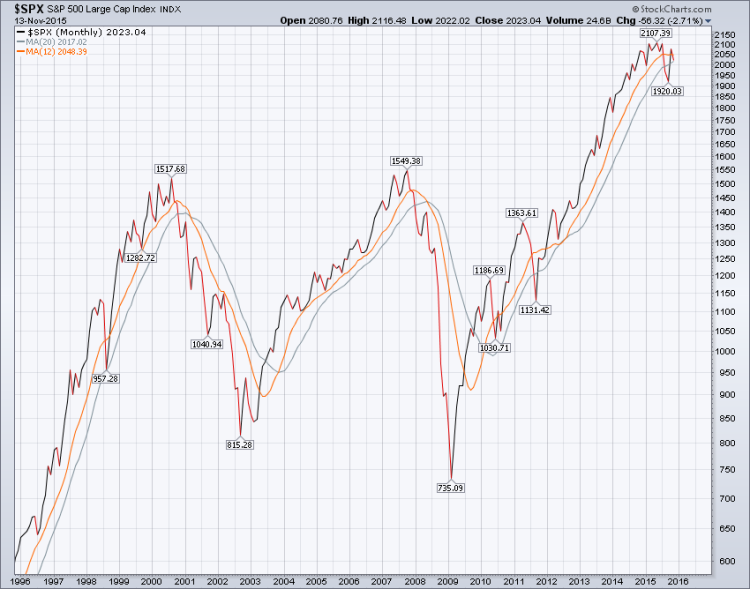Last week’s S&P 500 selloff has many convinced the strength of October was nothing more than a sinister Bear Market rally. Me? I’m just wondering what all of the fuss about.
There’s been 790 calendar months worth of performance for the S&P 500 Index since 1950, and 721 of them saw the index trade down below its prior month’s closing price. That’s right, 91.27% of all calendar months see the price of the S&P 500 drawdown below its closing price from the prior month.
Additionally, over the last 790 calendar months the average monthly drawdown for the S&P 500, as measured by the current month low to the prior month’s close, is -3.01%.
If we focus on the last 65 November’s since 1950 we can identify that the average November drawdown relative to October’s close is -2.86%. With October’s close being 2,079.36 this trading down to 2,019.89 at some point in November. Friday’s close was 2,023.04. History would suggest nothing out of the ordinary has unfolded with this S&P 500 selloff just yet. So what’s all of the fuss about?
While November’s drawdown was mostly predictable, what happens next is less certain. In the short-term, the S&P 500 is certainly “oversold” with relative strength readings (RSI) of 31.10, 22.56, and 18.61 on the 15 minute, 30 minute, and 60 minute charts. As well, there’s clear divergences on the 30 minute chart, and the hourly chart looks poised to rally. This is not to say we can’t experience further weakness, but it is to suggest further weakness is likely unsustainable over the coming five to ten trading sessions. The inevitable “oversold” bounce due the S&P 500 selloff last week will likely catapult the price of the index higher near-term.
Over the intermediate and longer term time frames, it’s becoming apparent that questioning the S&P 500’s primary trend is like attempting to answer a trick question – there is no trend, the index is trendless.
However, if we speculate about what primary trend the S&P 500 will choose next then it’s important to note an October clue the S&P 500 left behind that tends to be Bull Market friendly. October became just the 7th calendar month since 1950 to close above both its 12 and 20 month simple moving averages after closing the prior month below both its 12 and 20 month simple moving averages. The prior six calendar months in which this reversal occurred are nicely bullish in terms of forward looking returns and drawdowns. The average forward 3 month returns from the month end signal date is 6.66%, six month returns equal 9.90%, and twelve month returns land at 16.49%. 5 of the 6 instances never experienced a calendar monthly close drawdown, that is when the price of the S&P 500 never closed a subsequent calendar month below it’s closing value of the signal month. The lone drawdown was rather mild too, with the index closing a calendar month just 1.86% below its closing value of the signal month.
Unless this time is different, the index may have taken off in October and it’s not going to look back in terms of monthly closing prices, regardless of the recent S&P 500 selloff and any normalized November volatility.
Thanks for reading.
Twitter: @SJD10304
The author has positions in S&P 500 related securities at the time of publication. Any opinions expressed herein are solely those of the author, and do not in any way represent the views or opinions of any other person or entity.








